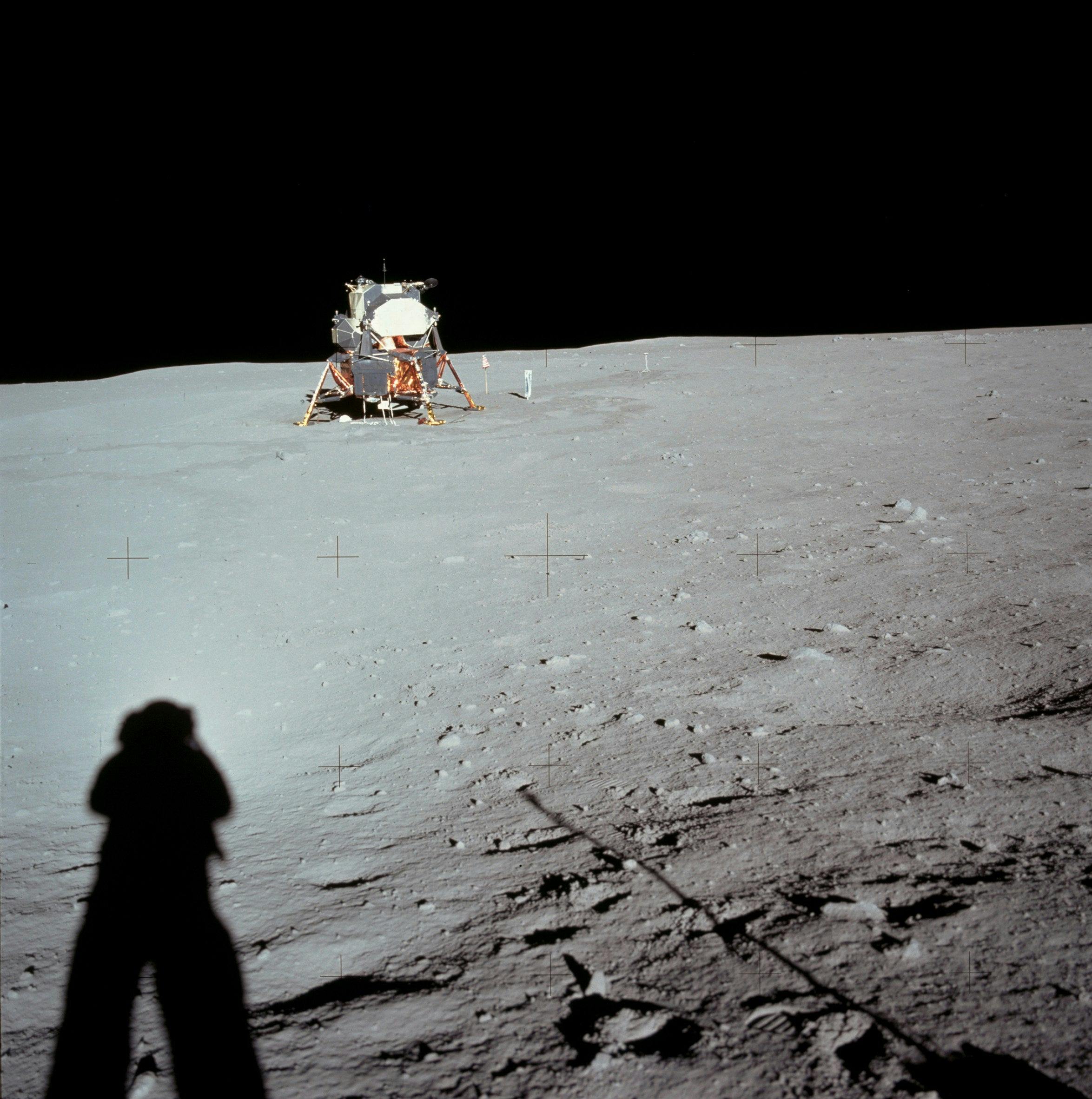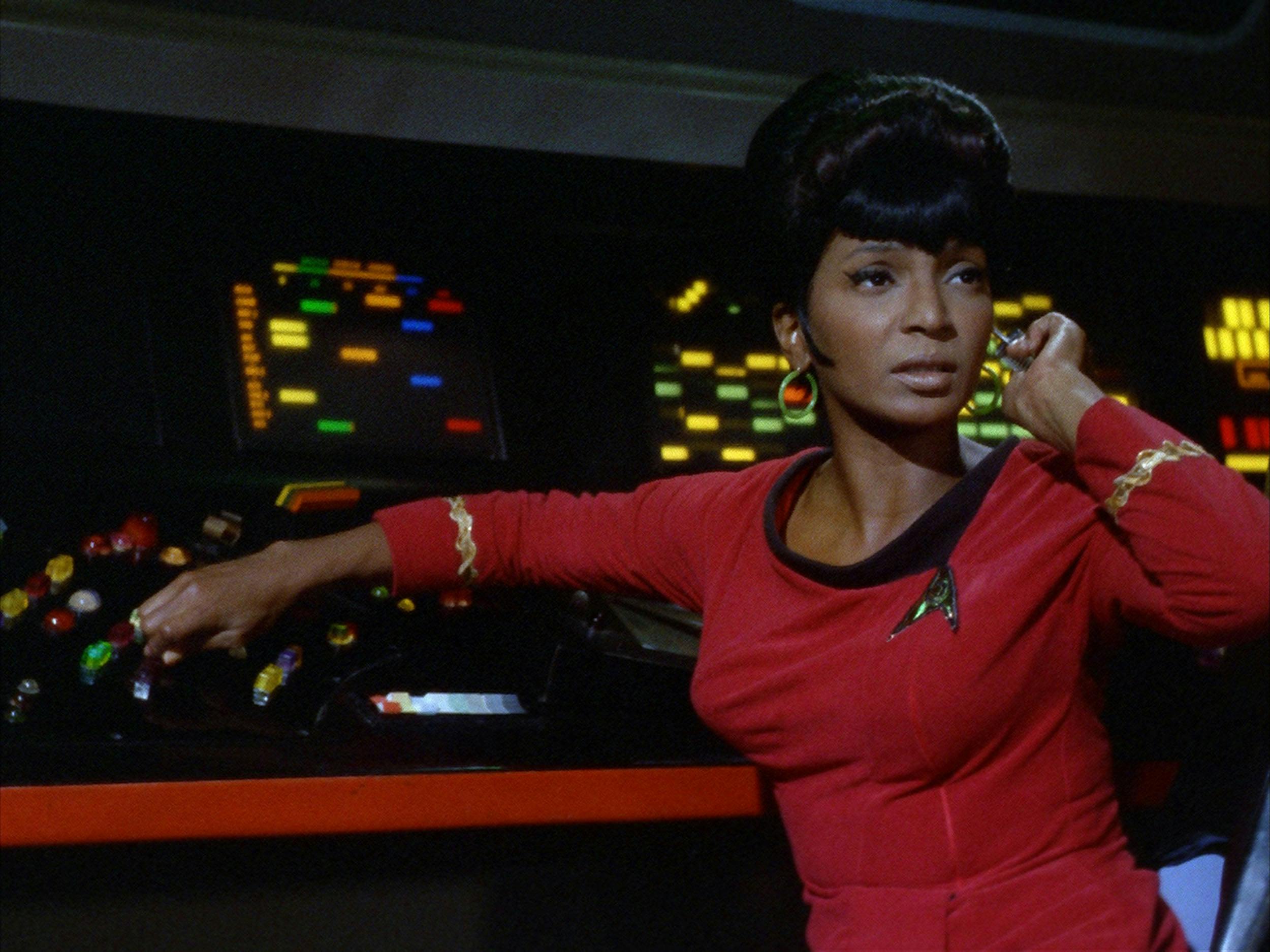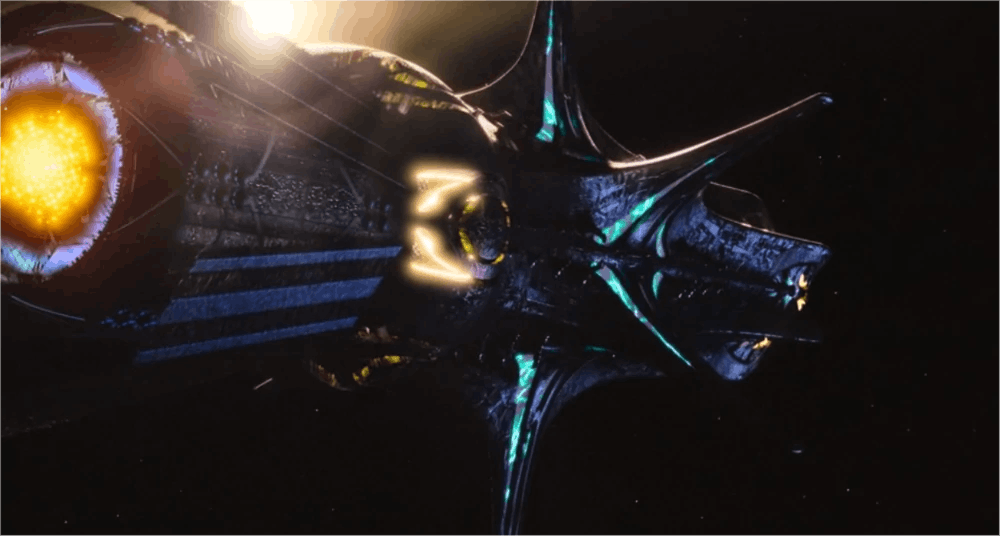Published Jul 20, 2022
One Small Step
Charting the strange symbiosis between Star Trek and NASA!

StarTrek.com
Fifty-three years ago – on July 20, 1969 – more than half a billion people gathered around their nearest TV set to watch the grainy black-and-white footage being beamed down from the Moon. As Neil Armstrong gingerly stepped down from Apollo 11’s lunar module, it seemed that real life had collided spectacularly with science fiction.?

NASA
Eighteen months earlier, American viewers lucky enough to own a state-of-the-art TV had already watched in glorious technicolor as Captain Kirk pre-announced the success of the Apollo program, from a vantage point 300 years in the future. In his famous “Risk is Our Business” speech – a high point of the second-season episode “Return to Tomorrow” – Kirk claimed NASA’s Moon Landing as the first step on mankind’s journey to the final frontier.
Optimistic as the captain’s prediction might have been – at least from the standpoint of TV production in 1968 – it was scarcely an act of clairvoyance. Trek’s designers had no notion of real-world flip-phones and tablets when they developed the communicator and PADD, but announcing the triumph of Apollo was more a case of the show nailing its colors to the mast. ?A risk, perhaps – since a successful Soviet landing in the meantime could render such future history obsolete – but one very much within the scope of Trek’s “business”.??

StarTrek.com
Launched less than a decade earlier by the charismatic U.S. President John F. Kennedy – a man whose confidence and easy charm would be channeled by William Shatner in his portrayal of the captain of the Enterprise ?– the mission to land an American on the Moon (undertaken ‘not because [it was] easy but because [it was] hard’) helped set the stage for Star Trek’s bold five-year mission. But in the decades that followed, the enormous cultural impact of Gene Roddenberry’s vision of humanity’s future in space helped inspire and revitalize the American space program.??
In 1976, as NASA prepared to unveil the first space shuttle – known as?Constitution?– President Ford was deluged by letters from Trekkies demanding the name be changed to?Enterprise. Astonishingly, he obliged – inviting Star Trek’s cast and crew to the grand ceremony in California, where a real-life spaceship?Enterprise?was rolled out to the tune of Alexander Courage’s iconic theme music.?

StarTrek.com
It was, in fact, not Shatner but Nichelle Nichols who would go on to play a major role in the American space program, when she accepted a job helping recruit a new cohort of astronauts whose diversity would match the crew of the?Enterprise. Previously, the NASA intake had been very much in the Kirk mold – white, straight and male – but after a busy four-month tour of speaking engagements, Nichols succeeded in boosting applications from 35 to over 1,000 and securing a 16-fold increase in the number of women applicants as well.? Six women and three Black men ultimately made it through NASA’s grueling selection process, among them Dr. Sally Ride – not only the first American woman in space, but the first queer astronaut as well.??
In 1986, when three of Nichols’ recruits were killed in the?Challenger?disaster, Star Trek officially paid tribute.?The Voyage Home, Trek’s most successful cinematic outing, opened with a title card that read — "The cast and crew of Star Trek wish to dedicate this film to the men and women of the spaceship?Challenger, whose courageous spirit shall live to the 23rd?Century and beyond.”
This wasn’t, of course, the first mention of a NASA spacecraft in a?Star Trek?movie. The climax of?The Motion Picture?seven years earlier had hinged on the revelation that the vast and inscrutable entity V’Ger was in fact a (fictitious) NASA probe, Voyager VI.?

StarTrek.com
Over the decades,?Star Trek?has continued to draw on NASA for inspiration. From the ill-fated?Charybdis?in? Next Gen’s “The Royale” to?Voyager’s Ares IV?(“One Small Step”) and Friendship 1 – another?Voyager probe in all but name, albeit launched under the auspices of UESPA – the agency continued to make its presence felt in the 24th Century. More recently, Trek has embraced other space agencies as well, with?Discovery name-checking the Soviet shuttle?Buran?and the Chinese spacecraft?Shenzhou, and Season Two of?Picard?featuring a pivotal space mission to Europa that represents a collaboration between no less than 17 countries.??
Real-life astronauts have been keen to get in on the action too – from Dr. Mae Jemison, who cameoed in the sixth-season?Next Gen episode “Second Chances,” to a brief appearance by E. Michael Fincke and Terry Virts in the?Enterprise?finale “These Are The Voyages.” The European Space Agency’s Samantha Cristoforetti went a step further, taking a?Voyager?uniform up into space with her for a spot on out-of-this-world cosplay.?
At times like these, the line between science fiction and science fact can begin to blur. Not for nothing, Media Studies professor Constance Penley coined the term ‘NASA/TREK’ to denote the strange, symbiotic relationship between the real-world space agency and the fictional sci-fi franchise. “NASA and Star Trek have merged,” she wrote in 1997. “Star Trek is the theory, NASA the practice.”
Star Trek: Enterprise Opening Credits
Four years later, when?Enterprise?debuted, the merger appeared to be complete. Every episode of the show carried a title sequence featuring not Scott Bakula’s Captain Archer, but NASA pioneers Alan Shepard, Neil Armstrong and Buzz Aldrin, and depicted a seamless transition from real-world spacecrafts (the Mercury-Redstone and Saturn V rockets, the Space Shuttle?Enterprise, the International Space Station) to Trek’s fictional continuation of the line — the OV-165 shuttle, Zefram Cochrane’s?Phoenix, and finally the?NX-01.??
Marketing images for?Enterprise?deliberately evoked NASA’s nostalgic heyday, mimicking the poster for the movie adaptation of Tom Wolfe’s book?The Right Stuff, which told the true story of the original Gemini astronauts of the mid-1960s. The new?Star Trek?show, a prequel to The Original Series, was taking a visual cue from the mission that preceded Apollo.?
In fact, Brannon Braga’s original plan for the series pitched it as NASA’s future as much as Trek’s past, with an entire first season set on Earth before the hero ship was even launched into orbit.? When that bold idea was nixed by the powers that be,?Enterprise was retooled as a more traditional Trek spinoff.?
In reality, it’s been 50 years since the last human set foot on the Moon, with the mothballing of the Apollo program in 1972. But in 2025, NASA plans finally to return.? If their new mission can capture some of the excitement of the original Apollo landing, then those astronauts boldly going to the surface of our nearest celestial neighbor will be bringing a Star Trek future one small step closer.??
Duncan Barrett (@BarrettsBooks) is an author and journalist. He hosts the podcast Primitive Culture on TrekFM.
Stay tuned to StarTrek.com for more details! And be sure to follow @StarTrek on Facebook, Twitter, and Instagram.
